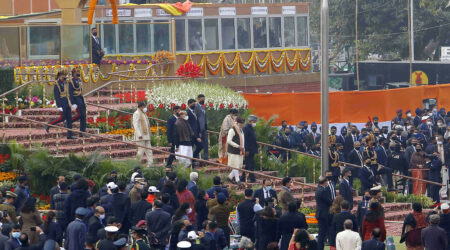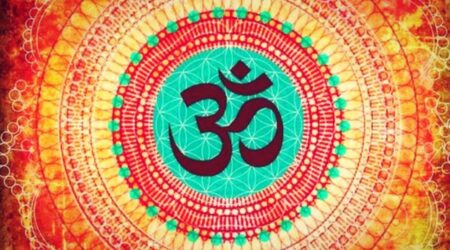By Bal Ram Singh, PhD
According to the Patanjali Yoga Sutra, 2.30, Ahimsa Satya Asteya Brahmacharya Aparigraha Yama, meaning Yama that blocks, stops, kills, tackles the unnatural tendencies and distractions.
So far, we have had elaborations and discussion on the first three elements, i.e., Ahimsa, Satya, and Asteya in this series. Brahmacharya is next in the series of Yama, and perhaps the most misunderstood element. It is mostly defined as celibacy, i.e., abstinence from sexual activity. While sexual activity could be a major distraction in mind, the Brahmacharya literally means the conduct of the Brahm, the entire universe.
The concept of the Brahm is to encompass anything and everything that exists. In Vedic declaration of Aham Brahmasmi, or that I am the Brahm, leads one to examine the meaning of Brahmacharya (Brahm, the entire universe + charya, meaning to act like one). There are two ways that one can conduct like Brahm; one for those who need to attain the Brahmness, and the other for those who have reached the Brahmness. Those who need to realize the Brahmness need to act inductively in such a way that they realize the Brahmness, i.e., one has to act in such a way that one becomes the part of all that exists, meaning that one has to become beyond self interest borne out of desire (kaam), anger (krodha), greed (lobha), infatuation (moha), ego (mada), and jealousy/malice (matsara), connected to all equally. The other ones may be those who have realized Brahmness, and thus need to act like Brahm.
Of the Hindu trinity, Brahma, Vishnu, and Mahesh, Brahma, as is obvious from the name, may be an ideal example of the personification of the Brahm, that one could use to practice and pursue. It is believed that the universe was created by Lord Brahma. In this role, Brahma is better known as the Prajapati or the master (Pati) of creation (Praja), the Prajapati being even today used as the last name for the potter community.
The etymological meaning of the word `Prajà’ is `Pra’ (Prefix) means intense and `Jan’ (root) means creative. The Brahma of that creativity is the target of an individual to realize the Brahm of the creativity. Hence, each individual develops his/her own creativeness and unique skills to develop into self-reliance and independence into the Brahmness. This whole idea to make people their own masters is a new step in the self realization process, which can be implemented through transformational education available through Vedic pedagogy.
Like the etymological origin of the word `Prajà’ from `Pra’ (Prefix) meaning intense and `Jan’ (root) meaning creative, the word `Brahmà originates from Sanskrit root “Bri” which means “to grow” or “to expand”, thus Brahm in facts expands to infinity. Although the term “Brahmà” does not appear in Vedas it is more prominently mentioned as the deity of creation in the post-Vedic-texts and Puranic mythologies. Hence, the Vedic god `Prajàpati’ is, in fact, identified as `Brahmà’ – the creator (Brahma is the Puranic heir of Vedic Hiranyagarbha, and Brahmanic Prajapati). Because of this very similarity even in today’s society `the creators of the society’, i.e. ‘Prajà’ address themselves as `Prajàpati’.
Like `Prajàpati’, Vedic god `Vishwakarmà’ too is considered as the lord of creation. In modern era, since creative talents are perceived by `Prajà’ people, so they relate themselves with above mentioned Vedic gods such as potters use `Prajàpati’ and carpenters, blacksmiths, jewelers use `Vishwakarmà’ in their surnames in recognition of their traits with `Prajàpati’ and `Vishwakarmà’. Thus, there is no harm in calling `Prajà’ people as lords of society, as long as they possess the creative qualities.
The Brahmacharya aspect of the Yama in Ashtanga Yoga is the invocation of this trait that one needs to develop for realization and harmony with nature.

Balram Singh is a Professor and the President of the Institute of Advanced Sciences, Dartmouth, Massachusetts, researching Ayurveda, Yoga, Vedic education, and Vedic social and political traditions. He is also an adjunct faculty at Jawaharlal Nehru University (JNU), New Delhi.












